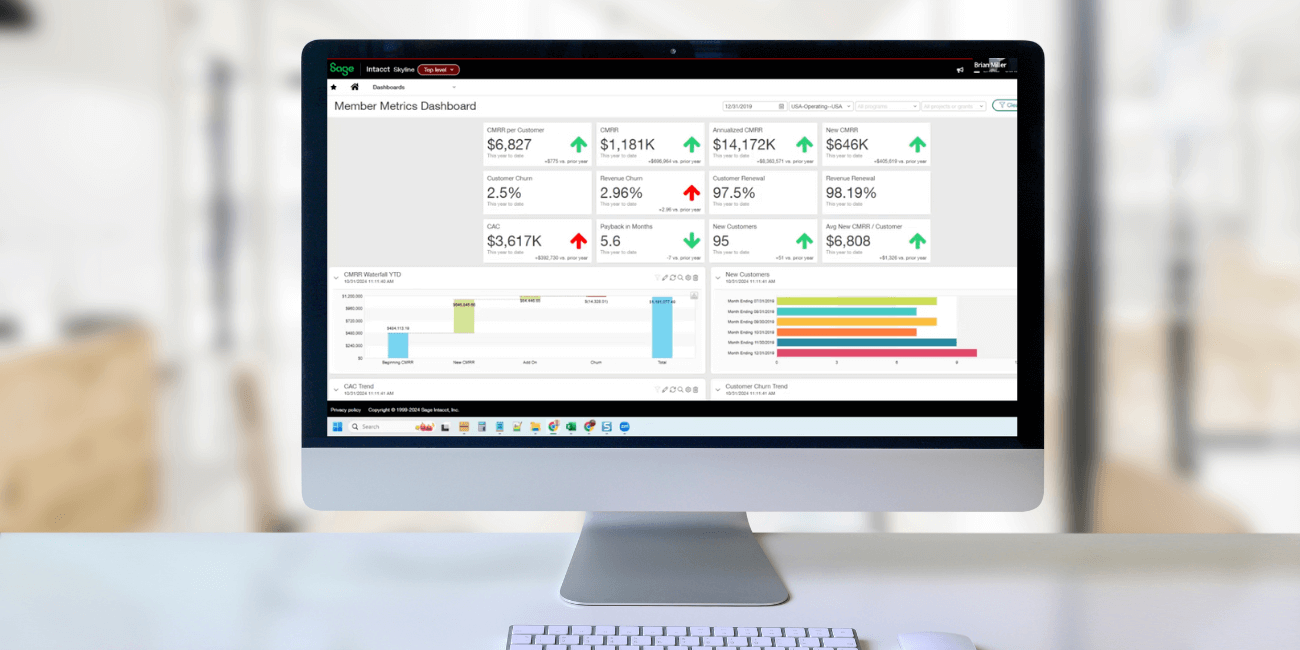
Feeling worn out with all the talk about legacy system challenges? Well, we have one more for you, and that’s working with only one book. With standard ERP systems, you’re often stuck with a single reporting or financial book, whether that’s accrual or cash basis. If it’s not obvious already, working with only one book severely limits the ability to generate accurate and diverse financial reports. If you’re looking to easily have consistent financial reporting, run U.S. GAAP reports, or create financials tailored for the board. You’ll need to download the data into Excel, then manually manipulate the transactions and repeat the same tedious, time-consuming process every time.
An alternative that many of our clients have enjoyed is gaining multi-book functionality that transforms their reporting with just a few simple configurations (read: piece of cake). Let’s see how this works and why your finance team will be sending you thank-you notes (probably with said cake).
>> The content of this blog is also available in this 10-minute video.
Sage Intacct's multi-book is best described as a book stacker. You’ve got your fiscal 1-12 accrual transactions. Layer on GAAP adjustments, management entries, and board reporting adjustments, and you’ve built a comprehensive reporting tower that can be stacked, peeled apart, or displayed side-by-side for easy comparison. Whether it’s allocations, sales metrics, statistical data, or purchase order commitments <link to Part 2 blog>, every layer is seamlessly embedded in your ERP workflows.
Legacy systems might force you to cram all your transactions into a single, rigid book, but Sage Intacct lets you diversify. With user-defined books for IFRS reporting, country-specific financials, purchasing commitments, or global consolidations, your ERP setup becomes adaptable. If you’re looking for European, Northern or South American reporting, it’s a small configuration to add these user-defined books that sync in real-time. Here's why that matters: businesses operating in "real-time" have achieved an impressive 62% higher revenue growth and 97% higher profit margins.
This functionality eliminates the frustrating, mistake-prone “export to Excel” step and replaces it with a streamlined, automated process directly within the Sage Intacct system. This saves your finance team time and increases accuracy for consistent financial reporting. With 59% of accountants making several errors every month due to excessive workloads and manual processes, this is a game-changer for many global companies.
Here is an example of a Member Metrics Dashboard in real time:

Here is a user-defined book that shows allocations, committed spends, eliminations, etc.:

Here’s a quick overview of what makes it so powerful:
See your accrual book alongside U.S. GAAP or ASC 606 revenue recognition books. Slice, dice, and analyze the impact of adjustments without extra effort.
On top of your accrual book, you can add user-defined books (Combine reporting book with other books):

Your finance team shouldn’t dread creating reports. With Sage Intacct, manual reconciliations and Excel edits are replaced by automated workflows and embedded functionality. Your team can:
Gone are the days of working with one book. Especially now that technology like Sage Intacct offers seamless automation tools that effortlessly organize, manage, and report on financial and non-financial data. If you’re tired of manipulating spreadsheets and using manual processes, it’s time to read a new ERP story.
Wondering how this powerful multi-book functionality can impact your business? Talk to one of our experts and stay tuned for Part 2 of the same topic, where we’ll dig a bit deeper into purchasing commitments, tracking allocations, and showing eliminations side-by-side using standard financial data.
Equation Technologies
United States: 533 2nd Street Encinitas, CA 92024
Canada: #301 - 220 Brew Street Port Moody, BC V3H 0H6
Phone: 866.436.3530 • E-mail: info@equationtech.us
Equation Technologies ©2016